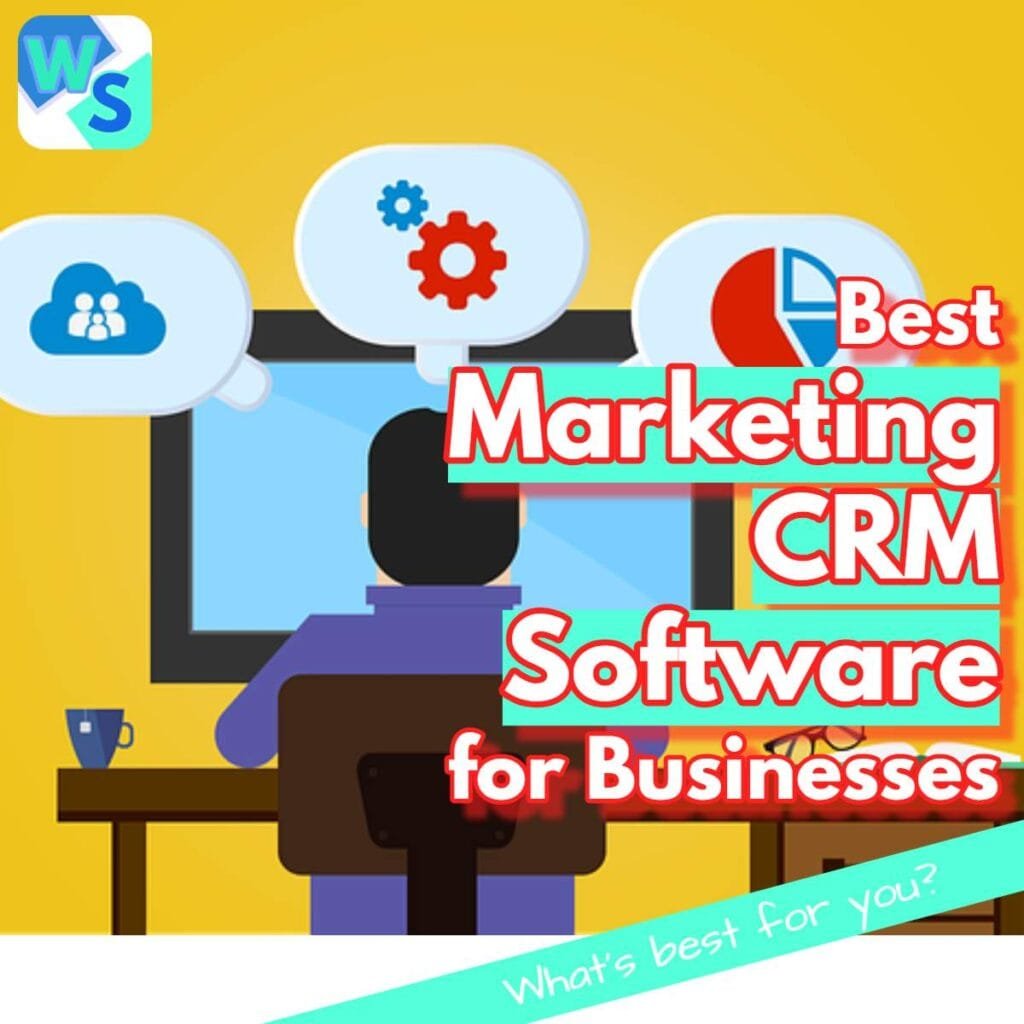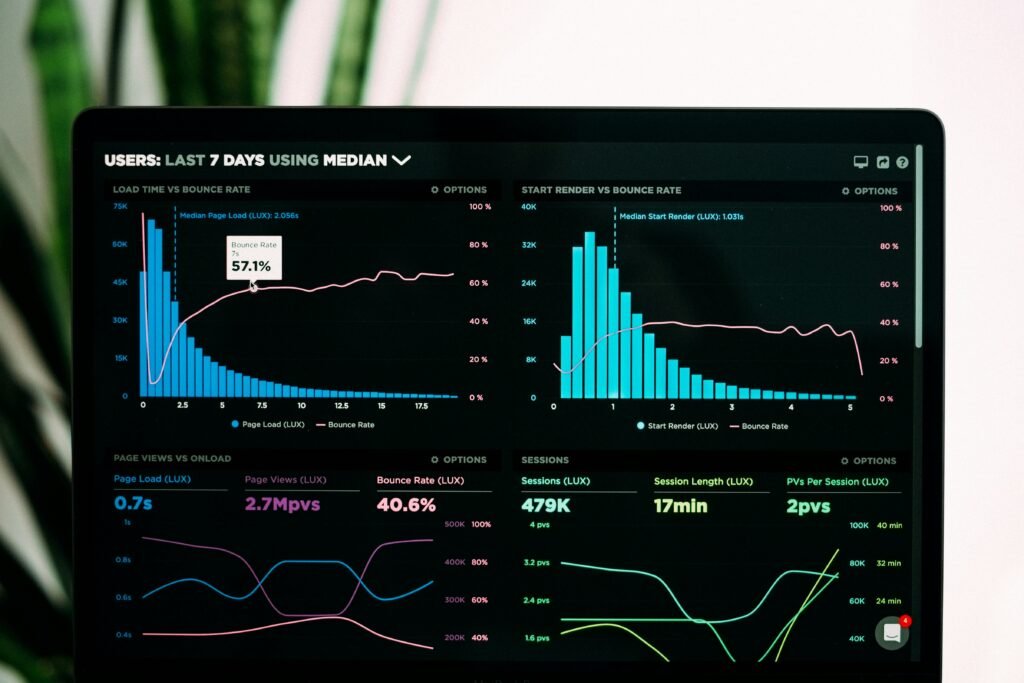Firstly, why should you care about this post? Is building an email list really that important when you are just starting out?
Well, the thing is, when you have just started a website or a blog, chances are you have got very few visitors, which is why you have to spend time to market your blog posts or website to potential leads. But, to do that you have to invest your time in stuff like SEO, social media marketing and the like.
Building an email list is a similar form of demand generation and marketing technique. It has been decisively shown in several stats that email beats out other marketing techniques when it comes to raw ROI results.
However, beginner bloggers and new website owners often leave this technique in the dryer for too long.
One reason behind this, according to me is that most new blogs have very little traffic and they also do not have a solid branding. I guess this is why, it is very hard to convert visitors to email subscribers.
The infinite number of posts out there which share tips and tactics to build an email list is no good because it neglects the fundamental principle – a new website has very low visitor count and due to lack of branding, it may not have the conversion rate that big and famous sites like HubSpot and NeilPatel.com boast!
However, in this post, I am going to show you how you can build a killer email list when you have very little visitors to your website and almost nil subscribers!
Featured: Download this List-Building Guide for Free
So buckle up and let’s get started!
Related: Check the infographic version of this article.
1. Get rid of all “subscribe to our newsletter” type opt-in forms – These “offers” are the least enticing and lowest converting calls to action on any website. They simply don’t work well in 2020 and beyond and every time you use one you’re limiting your opportunity to grow faster. Get creative with your offers and set a rule that you will not use lazy “subscribe to our newsletter” type offers.
2. Create companion guides instead of general “freebies.” – A companion guide is a freebie that’s designed as a companion to a specific article or page that the user is currently on. For example, if you publish a step-by-step tutorial, you might include a downloadable checklist as a companion guide.
Not only are these easier to create, the conversion rate on companion guides is anywhere from 2x to 15x higher than on general freebies so you can maximize opt-ins even when you have low traffic.
If you want to rake up the conversion rate numbers, you need to think of email addresses as currency notes given by subscribers. Therefore, just like if you want their money, you need to sell stuff of value, similarly, in this case, you can’t just half-ass your way through.
3. Offer things that involve a personal touch which you can’t possibly scale – Kevin Geary, who is the Chief Operating Officer of Hamon Creative had a client who was starting a golf blog.
He advised the client to offer a free golf swing evaluation – a super juicy interactive and personalized freebie that he couldn’t possibly offer to masses of people. However, when his traffic was at lower levels he was able to manage it and it was a huge hit with super high conversion rates.
Even better, he was able to convert people immediately to a coaching package by building trust with them. He used that strategy to get his business off the ground in the early days.
Tyler Forte, CEO of Felix Homes provided a free home valuation in return for a site visitor’s email address.
4. The Opt-In Must Be Very Relevant to Your Viewer – The main ingredient that you need for this is that you need to understand what a visitor may want. The opt-in should have a freebie that people in the niche want. The “niche” that I am talking about here, must be super-specific if you want to attract viewers in.
For example, Janice Wald of Mostly Blogging gives readers who have signed up from a social media article, a list of Facebook groups that allow daily promotion. If her readers signed up on an SEO post, she gives them a list of free SEO tools.
This shows that you don’t always need a downloadable to entice users to opt-in to your email list. What you actually need is something that people who are visiting the particular page of your blog or website need the most.
5. Be Creative With Your Opt-In – Marketing is an art. It is not stuff like accounting or finance where you crunch numbers and figure out the best possible outcome, well not always, at least. The main aim of your marketing efforts is to entice customers – whether it is to buy a product or to subscribe to your email newsletter.
Therefore give your opt-in form a cool look and then entice customers by providing some sort of “exclusive” stuff for “free”. These two words – exclusive and free are very powerful words when it comes to pulling customers into your email list.
According to Janice – “I once read someone in a relationship niche offered people the answer to “How do you know if a girl wants you to kiss her?” in exchange for an email address. His email list exploded! The answer was one sentence long: ‘She leans in.’
As you can see, the most creative opt-ins are the best.” However if you can pack value into your freebie for people in your niche and if it is relevant for people who are visiting the particular web-page or blog post, then that should be fine too!
6. You Need to Provide the Right Type of Value to Your Visitors and You Also Got to Keep Providing It – If offering freebies was all it took to build an email list, you would see it being executed everywhere.
The thing is people are savvy enough nowadays to judge “the book by its cover”. So, if you are doing it just like everybody else and offering throwaway ebooks or whitepapers, you are doing it all wrong. In fact, some bloggers pay content writers ridiculously small amount of money to spit out some garbage e-books that ultimately just leads the reader back to their site for the actual paid product.
However, according to Courtney Keene, Director of Operations of MyRoofingPal, what you need is something that genuinely has value – educational content with effort put behind it, like a cohesive, well-produced video, data you’ve gained over months or even years and have collated into an easily-digestible format or Ebooks that actually teach a concept from start to finish without trying to sell the reader anything.
However, it’s not enough to just offer these items in exchange for an email address. People are savvy enough to get the freebie and go on their merry way. Some will unsubscribe immediately, some will do so once the next email comes in.
You have to keep providing value, segmenting new users on a “test” list to see what they engage with before you try and sell them anything. Also, make sure you tell people what they’re signing up for and how often they’ll hear from you. This will not only allow you to convert users, but will also better retain them in the long run.
Remember, you can’t build an email list if your people jump off your subscriber list like a sinking ship!
7. Use Quora to Send Traffic to Pages with Opt-In Forms – The most troublesome part of a new website is that you have to do tons of SEO and Social Media Marketing along with posting quality content.
But with Quora, all you have to do is post really good answers with a call to action at the end of the answer directing them to your specific web-page for additional information in the form of a downloadable.
Related:
According to James Canzanella of IM Nights, Quora is great because there are thousands upon thousands of questions beings asked all the time, and you can give a great answer while also linking back to a specific page on your website. By doing so, it’s easier to increase your email conversions this way as long as you are offering something that your targeted audience would be looking for.
When Peter Koch, the founder of DollarSanity, a personal finance blog started blogging, he wrote only about selling on Amazon and promoted it on Quora.
As he was answering only questions related to selling on Amazon, soon he got almost 2k followers on Quora, 2M answer views, 150k readers to my blog and 700 email subscribers.
8. Use Facebook ads to get email subscribers – According to Nicholas E. Barron of Bidwell Hollow, the best way he has found to build website traffic and grow newsletter subscribers is with targeted Facebook ads.
Facebook is particularly important if your site or newsletter serves a niche audience. For example, Nicholas’ literary newsletter Bidwell Hollow struggled to attract new subscribers. However, after he started using targeted Facebook ads, he has grown his subscriber base by 101 percent since December.
The key to using Facebook ads is to zero-in on your target audience. What’s worked best for him is to focus on book lovers of just one country (U.S.), who are interested in newsletters, and who are engaged shoppers. This way, he is targeting those most likely to subscribe to Bidwell Hollow.
This tip shared by Nicholas is particularly interesting because according to a study by Adobe, ROI behind email marketing was $40 for every $1 spent. That’s huge if you consider that the second highest marketing ROI which is occupied by SEO has a return of about half of that. Therefore using Facebook to grow subscribers to your email list is a winning strategy!
Although the study was conducted in 2013, it still hasn’t lost its relevance since it is cited again and again by numerous websites and journals.
In fact, Calloway Cook, the Founder of Illuminate Labs uses paid Facebook ads to drive people to his site, and then offers them a significant discount to be sent to their email address. In fact, Calloway says that this tactic has worked great for his business.
Facebook ads are quite cheap, and are a great way to push people to your website when it’s too new to get a lot of organic traffic. You can then convert those visitors to long-term customers with an initial discount, and then re-target and re-sell to them in the future.
Related Read: How Digital Marketing can Help Grow Your Business
9. The Good Old Giveaway/Contest – Although having giveaways is a really old tactic to build an email list and to get more followers to your social media channels, the tactic is still alive and kicking. Robert Barrows of R.M. Barrows, Inc. Advertising & Public Relations in fact advises having a contest and giving stuff away if you want to build your email list very fast.
Then, follow-up on those contacts with additional emails. You can set up the additional emails through a company like Constant Contact to make it easier to handle. Make sure to contact the best prospects by mail and/or by phone to help generate even more business opportunities.
Jerome Williams, of JWorks Studios, which is a Graphics & Web Design company, suggests using giveaways too.
According to him, you should target sites like Reddit and the community you wish to draw in.
Hashtag #freegiveaway on Twitter and you’ll certainly get some looks.
One of the prerequisites for entering the contest will always be an email signup (because winners need to be notified!)
Those signups become part of your mailing lists because they willingly submitted their info under the agreement to be contacted in the future, and you were able to reach that audience via your marketing strategy.
With his first giveaway, Jerome was able to get entrants as far away as England, Australia, and (one of the winners) Japan!
However, a word of warning here – although giveaways are a great way to build awareness and get eye-balls to your email list, you must expect a lot of those subscribers to unsubscribe after the contest. Most subscribers are actually after the prize and therefore you can’t expect to generate a high percentage of leads among them.
Gina Moccio, Founder of Babe Crafted recommends hosting an Instagram contest with the goal in mind of collecting emails to build your list.
Partner with 1 or 2 other businesses or bloggers so you can cross promote one another and also create a giveaway bundle that’s enticing.
Have the way to enter the contest include sending you a DM (direct message) with their email address. The most successful contest that she ever hosted was a bundle of goodies in categories like skincare, food & drink, and fashion and it garnered over 100 entries!
Plus, as per Frank Spear, Content Marketer at SeedProd, if you want to expand the reach of your giveaway or contest, you can ask your existing followers to tag three of their friends and to subscribe for a chance to enter. This type of social sharing can quickly snowball, which equals more traffic, subscribers, and conversions for your business.
Building an email list by using giveaways sounds like an interesting topic. I’ll make an in-depth post on it soon.
Download a free version of this Featured Guide
10. Different Opt-Ins for Different Audiences – According to Kelly Sturtevant, Social Media Strategist at Blue Page Social Inc you could have multiple opt ins available for the website to put out into the world to attract your ideal customers to their list.
This is important since different customers may want different type of content. So using the same opt-in forms for everyone will not convert. For example, a travel blogger might use his Twitter and Instagram platforms to post different type of content. In his Instagram account, he might post pictures of the places he has visited while on his Twitter account, he might tweet regarding the camera and equipment he uses when travelling.
Now, it is important to understand that these two platforms used by the travel blogger are not catering to the same customers. While his Instagram account may have a person who loves travelling as the target audience, the Twitter account might cater to photographers and videographers as well as fellow travel bloggers.
This is why he needs to have different opt-in forms with different freebies or coupons or whatever – in his social media accounts. And, this is why you need to be super-specific with your opt-in forms for the audience.
This kind of brings me to the next tip –
11. Send out the landing page URL into your social media channels – This should be posted on all social platforms the business has. LinkedIn, Twitter, Facebook, Instagram etc. Any chance the business gets of showcasing this opt in (or other opt ins) should be taken.
Instead of going all-out on all your social media channels, I suggest you pick the one(s) which best suit(s) your niche. However, this alone isn’t all that effective if you don’t have a well-enough social media following.
Therefore you should join relevant Facebook groups, post on LinkedIn and Instagram with value-added content that leads to a landing page explaining the value of signing up for your newsletter. In fact, Jen Snyder of Women Winning Online got around 422 people to sign up for her email list by sharing her email worksheet in about 15 Facebook groups over the course of two months.
Also, you can join Facebook or LinkedIn groups where your ICA (ideal client avatar) is hanging out and join the conversations. Don’t spam your link on every post, but thoughtfully engage and when the time is right, reference a resource on your site or direct message people who have requested more information. (Tip shared by Nikole Haumont, Founder of Shield Bar Marketing)
Adam Hempenstall of Better Proposals also uses this simple tactic.
Related Read: How to Choose TheRight Social Media for Your Business
12. Use pop-ups with an offer – Ryan Popoff, CEO of Popov Leather uses pop-up forms that entices viewers with an offer. For Ryan, it’s a coupon code offering a discount for one of the leather wallets that he sells via his business. But according to Ryan, don’t just ask them for their email address; ask them if they’re interested in your offer first (this is called a micro agreement). Once your visitor says yes, they are more inclined to offer their email address.
13. Place several signup forms on your website – Liviu Tanase, founder and CEO of ZeroBounce recommends you put them especially above the fold, which is the first thing people see. Since the average viewer has very little attention-span it is best to put the opt-in form in front of the viewer as soon as possible.
Although I believe in its importance, I’d recommend you put the form into the body just 1 or 2 paras down so that the viewer can understand the relevance of your opt-in form with the article that he is reading.
However, there is no harm to put in many opt-in forms – such as one above the fold, one as a pop-up, one or more in the body and one after the end of the post. Just make sure you don’t spam the viewer as that can do more harm than good. In fact, Angie Gensler got 100 email subscribers to her list from her new website in just 10 days using only this tactic!
14. Include a subscription button at the end of every email – That way, if your email gets forwarded, other viewers will have a chance to subscribe.
15. Always include a “Forward this email” link in all your outgoing emails– According to Mayank Batavia, Manager, Marketing and Partnerships at QuickEmailVerification, having a forward this email link, makes it easy for (and reminds and encourages) your recipients to share your marketing email with people in their network.
16. Break their Auto-pilot – Pop-up forms asking for email is such a common occurrence nowadays that most people just straight up ignore them, kind of like on autopilot. This is why you need to break their auto-pilot and get them to pay attention to why they must subscribe to your list.
Stacy Caprio the Founder of Growth Marketing says that one of the best ways to build an email list for a new website is make your email list collection popup say something extremely unexpected that catches the user’s attention before asking for their email address.
Most people are used to email popups at this point and used to quickly closing them and moving on with browsing, but if you make yours catch their attention or even make them smile or laugh or take an extra second to process, they will take note and have a higher chance of reading the rest of your popup and actually signing up for your list.
17. Use Video Content in Your Blog and Make It Downloadable – A good blog post contains detailed text, a lot of contextual images and one or two videos. Video content is being consumed at a hyper-rate nowadays.
According to Sean Clancy, SEO director, Edge Marketing Australia, offering downloadable videos helps people who come across the site that don’t have the time right there and then to watch the video, or can’t watch it in a public environment.
By offering this option, your audience can watch the video at their own leisure. However to download the video, they need to put in their email. That way, you get to build your list and your audience gets the video they want!
18. Leverage exit-intent pop-up – According to Jared Arnold, founder of AdsVice, the best tactic if you had to choose one would be to leverage exit-intent pop-up technology.
This is usually simple JavaScript code (provided by a host of different 3rd parties) that only serves a user the pop-up when it senses the cursor moving rapidly towards the “x” on the browser tab.
In mobile, we don’t use a mouse so this would be triggered when someone double clicks the browser to switch between tabs or presses the back button.
The popup creative normally includes copy like “Wait, before you go…” or “Save 10% Off Your Next Order When You Join Our Newsletter”.
There are a number of options here. Some businesses may sell consulting services, a SAAS product or just want to build traffic. Often, businesses like these will leverage a “lead magnet” which is usually a PDF guide that answers some standard questions relevant to their audience.
Imagine you land on a mortgage website but don’t want to fill out a mortgage inquiry quite yet.
You go to exit the page and a popup says “Wait! Join Our Newsletter and We’ll Send You Our 2020 Guide to the Biggest Mistakes When Getting a Mortgage”.
That tactic will drive sign-ups all day. A standard conversion rate of visitors to subscribers (assuming you have a decent call-to-action) should be around 5% (as high as 10%). Let’s say you only get about 100 visitors a day to your site. That still results in 150 new subscribers every month.
This may seem like an annoying tactic or a desperate move. Most of Jared’s clients gasp at the initial concept. But, once you realize that everyone from Architectural Digest to Target.com leverage this strategy it becomes obvious that it is an essential tool used to grow your email list all over the web.
19. Build Trust with Your Audience – There are too many websites trying to get people’s email lists nowadays. While this is more-so in the marketing segment, almost every other website I visit, forces me to go through a sign up form.
However, the spamming doesn’t stop even after you sign up. And, here’s where you are going to be different.
According to Daniel Foley, Director of Assertive Media, people are scared of being spammed; there are so many spammers out there sending daily emails to subscribers that it just puts them off, and with the privacy issues people are wary of companies sharing, or worse – selling their data to other companies, which makes for even more spam.
However Daniel says “with our pop up boxes and call to actions we explicitly state how often we will email subscribers and promise – upfront – not to share/sell their details to anyone, not even our partners. This overcomes the two biggest objections upfront, helping to increase their trust in us enough to commit to pressing that subscribe button and putting in their all-important email details.”
You know, privacy is really an issue nowadays. Some months back, people didn’t much care while giving their personal information to websites, but after the release of movies like “The Great Hack”, people have become more sensitive towards handling out their personal information just like that.
Now, this tactic won’t get you a giant uptick of subscribers, but it will prevent unwanted drop-offs from your sign-up form or landing page – usually people who are concerned about spamming. I also follow this advice, but I usually send it out as part of my automated email when someone signs up for a downloadable, so as to let them know of what they can expect from me.
20. First get to know who your audience is – Most companies approach their site from their standpoint – what can I sell you today, what I can do, why you should want my services, a “Look at me!” approach. Unfortunately, most visitors want you to help them with their problems, they want to know how you are going to solve it and solve it when they need it.
According to Pamela Durkin, Interior Designer Business Coach, there are a few different kinds of visitors to your site – cold, warm and hot. Each one needs a different message. How do you provide that?
Put yourself in a prospective client’s shoes.
Cold leads have doubts and don’t know you very well, so you need to provide some free easily consumed content so they can see if they like what you are saying.
Warm leads are eager to know more, you have piqued their interest and they want to dive a little deeper. They need to be directed to a webinar or other in depth piece of content.
Hot leads are ready and want to buy now; these people need to be able to easily get to your products/offerings. So the approach in having a website that can capture better leads is to meet the visitor where they are at – are they cold, warm or hot? Providing these levels of content will greatly increase the amount and quality of converting visitors to those who opt-in.
Similarly, you should customise your landing pages by judging the place where your audience is coming from. If your audience visits your site via Google, usually they are searching for a solution to a problem that they face. Therefore, you can offer content upgrades that offer to-the point solutions to their problems as a bonus.
However people who visit your site from social media sites such as Facebook or Instagram, are usually searching for a story – something that will help make their lives better – but usually they are just doodling their time.
So, your giveaway or landing pages should be framed with that in mind. Offer a story and your conversion rates will boost up.
21. Leverage Podcasts to Grow Your Email List – The number of people who listen to podcasts is growing like crazy. Marketers predict it to become (it already has become) a huge part of content marketing this year or the very next.
Naresh Vissa, Founder & CEO of Krish Media & Marketing has had a client who used this strategy. As per the strategy, when visitors click the “Play” button or “Listen” for a podcast, a pop-up comes up immediately asking the user to enter their e-mail into a box so they can listen to the episode. The only way they can listen to the podcast would be by entering their e-mail address. This seems forceful, but it’s a great way to collect new e-mail leads.
Now, I personally feel that the idea behind this can lead to loss of visitors, therefore I think if a little bit of behavioural psychology is used, a better way of using this strategy is by implementing the pop-up to come up in the middle of or after a few minutes of the podcast. Therefore since the audience has already invested a significant time and energy into listening to it, they are more amiable to giving out their email.
22. Use PPC Ads – Since your visitor count is less, it is smart to find visitors from outside your website by using ads. Angelo Frisina of Sunlight Media LLC suggests that it’s best to run a PPC campaign, either on Google or Facebook. Target your campaign for engagement, not for conversions.
Create a special offer, such as discounts, free tips, prizes etc.
Create a lead capture page that has rich information and a strong CTA.
Keep the lead capture form very simple: (Name & Email).
Synch it to your mailing list server: MailChimp, constant contact or HubSpot with auto responders.
Here’s How You Can Use PPC Ads like a Pro
23. Customise Your Pop-Ups – According to Katie Holmes, Data Analyst and Internet Marketer at OutWitTrade, the best way for a blog with low traffic to get more email subscribers is to have an entry popup with a customized opt-in form for each post.
For example, say you are an internet marketing blog with articles on SEO, article marketing, getting clients and so on – each of these posts can have an entry popup with an opt-in form with slightly different copy for each post.
The article on SEO may have a popup that says “Get more tips on SEO – subscribe to my newsletter below” while the article on getting clients can have a popup saying “Read more on my top tips for getting clients – subscribe to my newsletter below” etc.
24. Go Person-to-Person – The primary problem most new websites and blogs face is inadequacy of visitors. Therefore if visitors do not reach you, you should reach out to them. This tip shared by Ali Khundmiri, Social media strategist at Intandemly.com is one of my favourites.
Here’s what he has to say – “I was reading this book by Drift called “this won’t scale”. They have a chapter on how they started their email list. It was the most boring task ever.”
Reach out to people though LinkedIn, Twitter and other social media platforms, and ask them.
“The neat trick they used was instead of sharing the link within the first contact, they asked for their permission. “If you are interested, please email back and we will share the link with you”. As a result, they came out as less sale-sy.”
You can combine this technique with HARO. When you conduct an expert round-up, ask your participants if they want to subscribe to the newsletter.
Related Read: How to Build Links and Gain Exposure via HARO
25. Show; Don’t Show! – Raj Dosanjh, the founder of RentRound.com has a really cool trick up his sleeve! Here’s what he does in his own words –
To increase our subscribers, we decided to show our letting agent comparison results to landlords, without them needing to enter their personal details.
After a few seconds, the comparison results will then blur, and a pop up would show requesting the landlords personal details and email. This tactic gave a brief insight to our comparison search results, giving us credibility in terms of what we show is useful.
This then persuaded more landlords to enter their details, as we proved it would be worthwhile. If a landlord decided not to enter their personal details, our site wouldn’t then show the comparison results.
26. Always keep an opt-in form in the view of the audience – According to Farasat Khan, the Growth Marketer at IsItWP, building an email list from scratch requires a lot of A/B testing and patience.
One good way for a new website to generate subscribers is by constantly showing your opt-in form.
This means by having a form in your site’s blog sidebar, will ensure your visitors are always presented with something to engage and act.
But by having a form in front does not guarantee leads. In order to have maximum engagement, make sure your opt-in offer is tempting. It could be a Bonus, Cheatsheet, a free course or anything that adds value for the reader beyond what he/she is actually reading in the blog post.
27. Let Your Leads Choose The Topics on Which They Want to Receive Emails From You – It doesn’t matter what niche, your blog’s on, there must exist several sub-niches or sub-topics. Having the option to let your audience choose what they are most interested in, allows you the opportunity to send only the most relevant content to them.
This can prevent unwanted or high rate of unsubscribers and it can also help prevent spamming your audience with unrelated content. For example, if you have a website which teaches cooking, you may want to know if your audience is interested in vegan or non-vegetarian recipes. It’s of no use to send a vegan an email teaching them how to cook “Honey Lemon Chicken”!
According to Tore Christensen, the founder of Danish sports blog spilstrategi.dk, building multiple e-mail flows that support each subject on your site, and being sure to deliver exactly what you promise each customer on each signup form, such as targeted news, not general news will raise your conversion rate and CTR on e-mails and get loyal customers. It will also boost your subscriber conversion rate.
28. Use Quizzes – These work like crazy when it comes to taking emails from potential leads. Provide your audience with a questionnaire with the aim being that you will show them certain results after they finish the questionnaire. When they finish the quiz, tell them that you will email them the results and ask for their email.
This works like crazy because the audience has already invested some time and efforts in trying to find the results and it is highly unlikely that they will back off at that time.
You can use this strategy at your own site or even conduct quizzes in social media platforms such as Facebook. James Blews, founder of JamesBlews.com uses this strategy.
29. Make the UX work for you – Tying off all the above tips, you need to get the design of your blog of website to work for you. If the design’s rotten, everything else fails.
I know the quote “Never Judge a Book by Its Cover” but unfortunately in our world, that is how people judge the content or the quality of the list that they are signing up for.
And, that’s the least of your concern, if your audience doesn’t get to see your sign up form or white-paper-downloadable section or doesn’t like your content upgrade form, it is highly unlikely they are going to sign up.
Luka Arezina, co-founder and editor-in-chief at DataProt was amazed after the revelation of how many websites had forgotten to leave the box for signing up for email newsletters in a visually accessible spot.
Maybe it’s a slip, but it should be on your mind when designing the UX for your website or blog. Nobody wants to put effort into searching for where to sign-up. It should be readily available for your website’s visitors.
That’s all. All these tips have been designed keeping in mind a website that has very little visitors so as to analyse the data to get meaningful insights. But, this list will have a ton of other additions in way of additions. If you want to download the list in the form of a great PDF, you can do so by clicking here.
That’s all. If you liked the article, do leave a comment and hit share!
Bonus Tactics:
1. How to Prevent Your Leads From Unsubscribing – Just normal Lead Magnets are not enough. Every marketer and their dogs are using the strategy nowadays. You gotta go above and beyond. Here’s how Bea Hajde, the owner of Give Me a Bag suggests you to do it –
An age-old method for creating email lists and lead generation is giving away something free in exchange for an email address. Sadly, these offers are usually something that may look enticing to prospective list members, but in reality, their value is almost negligible.
I believe giving away “true” value will always draw in more people and increase engagement and conversions over the long run.
For example, instead of offering the usual 5-step cheat sheet or short eBook with vague tips, you could offer a highly detailed pre-recorded training video about one aspect of your niche for free. It’s an incredibly powerful gesture and often leaves people wanting more. It’s a risk since you’re giving away part of your “product” or knowledge, but it works great for both large sites and newly created small blogs.
2. Remember the 7 Post Rule – Your lead needs to interact with at least 7 of your post before you can actually sell to them. Therefore don’t ever try to sell to your subscribers immediately. That’s a huge turn off that can get them to immediately unsubscribe.
Instead blow them off by providing immense valuable post. And, as soon as you find that they interact with at least 7 of your posts or email, try to soft-sell them.
That’s all, if you want to read this blog post later on, you can download it here for free.
That’s all. If you liked the post, do share. Also, I’d love to know your thoughts; so drop in a comment.





















